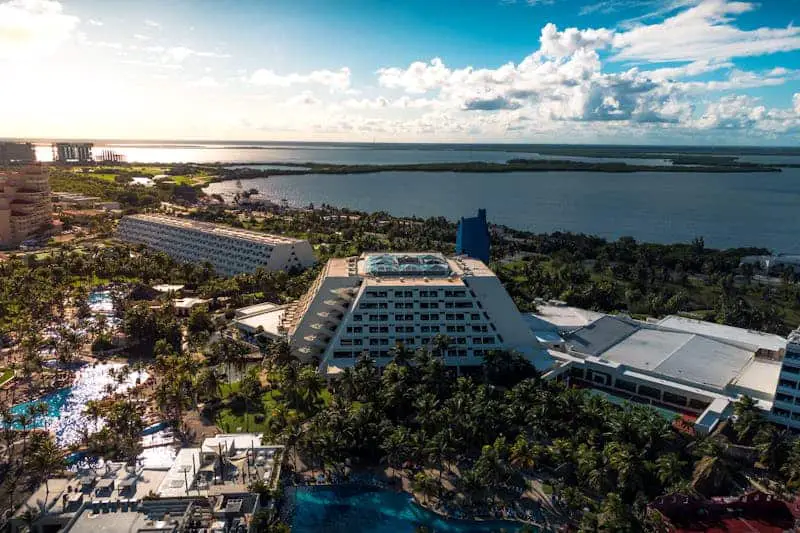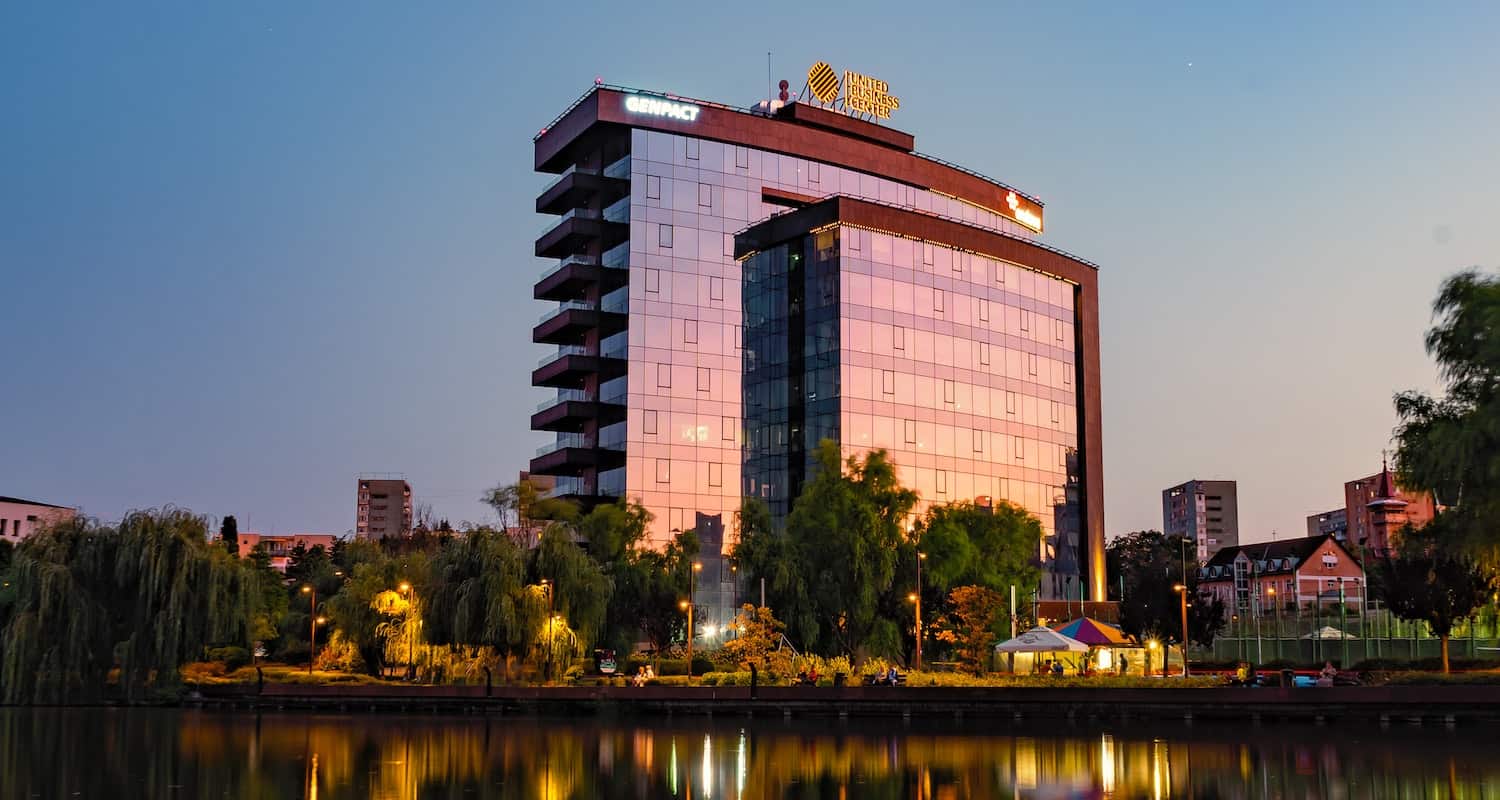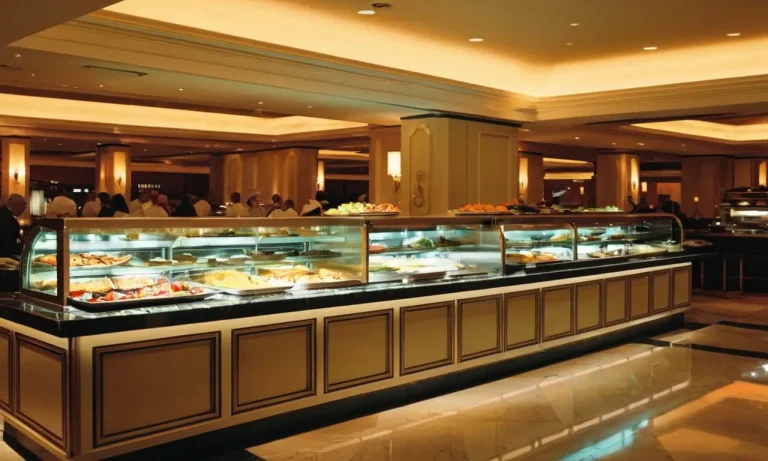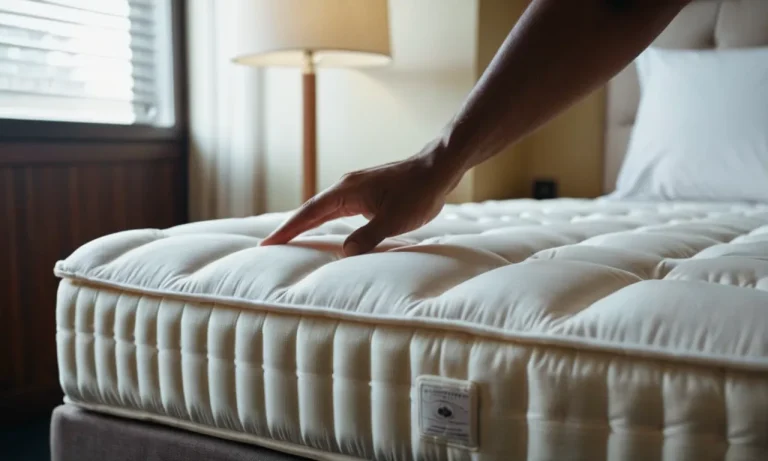How Much Does a 5-Star Hotel Make a Year? An In-Depth Analysis
In the world of luxury hospitality, 5-star hotels stand as beacons of opulence, offering unparalleled service and amenities to discerning travelers. These iconic establishments are not just places to stay; they are destinations in themselves, promising unforgettable experiences and memories that last a lifetime.
If you’re short on time, here’s a quick answer to your question: A 5-star hotel’s annual revenue can range from tens of millions to hundreds of millions of dollars, depending on various factors such as location, size, occupancy rates, and pricing strategies.
In this comprehensive article, we’ll delve into the intricate world of 5-star hotel finances, exploring the key factors that influence their profitability, the revenue streams they rely on, and the challenges they face in maintaining their prestigious status.
From room rates to ancillary services, we’ll uncover the secrets behind the financial success of these luxurious establishments.
Factors Influencing 5-Star Hotel Revenue
Location, Location, Location
When it comes to the success of a 5-star hotel, location is undoubtedly one of the most critical factors. Hotels situated in prime locations, such as major cities, tourist destinations, or areas with high business activity, tend to command higher room rates and attract more guests.
A 5-star hotel in a prime location can generate up to 30% more revenue than a similar property in a less desirable area.

Size and Capacity
The size and capacity of a 5-star hotel play a significant role in determining its revenue potential. Larger hotels with more rooms and amenities can accommodate more guests and offer a wider range of services, leading to higher revenue streams.
However, it’s important to strike a balance between size and operational efficiency, as larger hotels often have higher overhead costs. Luxury hotels with more than 500 rooms generated an average revenue per available room (RevPAR) of $138, compared to $98 for hotels with fewer than 100 rooms.
Occupancy Rates and Seasonality
Occupancy rates and seasonality are critical factors that influence a 5-star hotel’s revenue. High occupancy rates translate into higher revenue, while low occupancy rates can significantly impact profitability.
Seasonality also plays a crucial role, as hotels in popular tourist destinations may experience peak seasons and off-peak seasons, affecting room rates and occupancy levels. According to Statista, the average RevPAR for luxury hotels in the United States is projected to reach $103 in 2024, a significant increase from the pandemic-affected years of 2020 and 2021.
Pricing Strategies and Market Positioning
Pricing strategies and market positioning are essential factors that influence a 5-star hotel’s revenue. Hotels that position themselves as luxury destinations can command higher room rates and generate higher revenue per available room.
However, it’s crucial to strike the right balance between pricing and perceived value, as overpricing can lead to lower occupancy rates. According to a McKinsey report, luxury hotels in the United States saw a significant drop in RevPAR during the COVID-19 pandemic, with a decline of up to 60% in some markets.
Effective pricing strategies and market positioning will be crucial for 5-star hotels to recover and thrive in the post-pandemic era.
Revenue Streams of 5-Star Hotels
The success of a 5-star hotel hinges on its ability to generate substantial revenue from various sources. These high-end establishments rely on a diverse range of revenue streams to maintain their luxurious offerings and exceptional service standards.
Let’s delve into the primary revenue drivers that contribute to the financial success of these premier hospitality establishments.
Room Revenue: The Backbone of Profitability
Room sales serve as the backbone of a 5-star hotel’s profitability. These properties command premium rates for their opulent accommodations, often ranging from several hundred to thousands of dollars per night.
According to Statista, the global average daily rate for luxury hotels in 2022 was around $350. However, in major cities and prime destinations, the rates can soar well above $1,000 per night during peak seasons.
Occupancy levels play a crucial role in determining room revenue, with top-tier hotels striving to maintain high occupancy rates to maximize their earnings. 😎

Food and Beverage Operations
Fine dining restaurants, chic bars, and lavish banquet facilities contribute significantly to the revenue streams of 5-star hotels. These establishments often boast renowned chefs, curated menus, and exquisite culinary experiences that cater to the discerning tastes of affluent guests.
From Michelin-starred restaurants to trendy rooftop bars, food and beverage operations can account for a substantial portion of a luxury hotel’s revenue, sometimes even surpassing room revenue in certain cases.
Spa and Wellness Services
Offering a sanctuary of relaxation and rejuvenation, 5-star hotels typically feature state-of-the-art spa facilities and wellness services. From indulgent massages and luxurious body treatments to cutting-edge fitness centers and personalized wellness programs, these amenities cater to guests seeking a holistic and pampering experience.
According to a report by Spherical Insights, the global luxury spa market is projected to reach $347.9 Billion by 2032, highlighting the significant revenue potential of this segment.
Event and Conference Facilities
Many 5-star hotels boast elegant ballrooms, sophisticated meeting spaces, and cutting-edge conference facilities. These venues attract corporate events, weddings, conferences, and high-profile gatherings, generating substantial revenue through room rentals, catering services, and ancillary offerings.
With their impeccable service, state-of-the-art technology, and luxurious settings, these hotels can command premium rates for their event spaces, making this a lucrative revenue stream.
Ancillary Services and Retail
Beyond the core offerings, 5-star hotels often generate additional revenue through ancillary services and retail operations. These can include airport transfers, limousine services, curated shopping experiences, and branded merchandise.
Upscale boutiques, art galleries, and souvenir shops within the hotel premises provide guests with exclusive shopping opportunities, further contributing to the overall revenue mix.
By skillfully leveraging these diverse revenue streams, 5-star hotels can achieve remarkable financial success while delivering unparalleled luxury experiences to their discerning clientele. It’s a delicate balance of offering exceptional service, curating unforgettable experiences, and maximizing revenue potential across multiple touchpoints.

Operating Costs and Profitability Challenges
Running a 5-star hotel is no easy feat, as it requires a delicate balance between providing exceptional service and managing soaring operational costs. These luxury establishments face a myriad of challenges that can significantly impact their profitability.
Let’s dive into the key areas where expenses can quickly add up:
Labor Costs and Staff Management
Maintaining a well-trained and attentive staff is crucial for a 5-star hotel, but it comes at a premium. From front desk personnel to housekeeping and fine dining staff, labor costs can easily account for 30-40% of a hotel’s total operating expenses, according to Hotel News Resource.
Retaining top talent and ensuring excellent customer service requires competitive salaries, benefits, and training programs – all of which can strain a hotel’s budget.
Maintenance and Upkeep
Guests at a 5-star hotel expect impeccable facilities and amenities, from pristine guest rooms to well-manicured grounds. Keeping up with the constant maintenance and upkeep of these properties is a significant expense.
Regular renovations, repairs, and replacements of furniture, fixtures, and equipment are necessary to maintain the hotel’s luxurious aesthetic and functionality. Maintenance costs can range from 3-5% of a hotel’s total revenue, with larger properties often spending even more.
Energy and Utility Expenses
Running a 5-star hotel is an energy-intensive endeavor. From powering guest rooms and common areas to heating pools and maintaining lush landscaping, the utility bills can quickly skyrocket.
Additionally, many high-end hotels offer amenities like spas, fitness centers, and restaurants, further increasing energy consumption.
According to a report by ENERGY STAR, hotels in the U.S. spend an average of $2,196 per available room annually on energy costs alone.

Marketing and Promotional Efforts
In a highly competitive market, 5-star hotels must invest heavily in marketing and promotional efforts to attract and retain guests.
From lavish advertising campaigns to maintaining a strong online presence and partnerships with travel agencies, the costs of promoting a luxury brand can be staggering. Top hotels can spend up to 10% of their revenue on marketing and sales initiatives.
Taxes and Regulatory Compliance
Navigating the complex web of taxes and regulatory requirements is another significant challenge for 5-star hotels.
From property taxes and occupancy taxes to compliance with health, safety, and labor laws, these establishments must allocate substantial resources to ensure they remain in good standing. These taxes and fees can account for over 25% of a hotel’s total operating costs in some jurisdictions.
Despite these formidable challenges, the allure of operating a 5-star hotel remains strong for many investors and hospitality groups. By carefully managing costs and delivering exceptional service, these establishments can still achieve profitability – albeit with a constant eye on efficiency and innovation.
Strategies for Maximizing Revenue and Profitability
Revenue Management and Yield Optimization
Effective revenue management and yield optimization strategies are crucial for 5-star hotels to maximize their profitability. This involves analyzing market demand, competitor pricing, and guest booking patterns to optimize room rates and inventory distribution across various channels.
By leveraging advanced revenue management systems and data analytics, hotels can dynamically adjust their pricing based on real-time demand, ensuring they capture maximum revenue while maintaining high occupancy levels. Implementing sophisticated revenue management strategies can increase a hotel’s revenue by up to 15%.
Guest Experience and Loyalty Programs
Delivering exceptional guest experiences is paramount for 5-star hotels to foster loyalty and drive repeat business. This involves investing in top-notch amenities, personalized services, and creating memorable experiences that exceed guest expectations.
Loyalty programs play a vital role in rewarding and retaining valued guests, offering exclusive perks, discounts, and recognition. Majority of travelers are more likely to book with a hotel brand that offers a loyalty program.
By leveraging guest data and preferences, 5-star hotels can tailor their offerings and create customized experiences, driving guest satisfaction and loyalty, ultimately boosting revenue and profitability.
Sustainability and Eco-Friendly Initiatives
In today’s environmentally conscious world, 5-star hotels are embracing sustainability and eco-friendly initiatives to appeal to conscious travelers and reduce their carbon footprint. This includes implementing energy-efficient technologies, water conservation measures, waste reduction programs, and sourcing locally grown, organic produce.
Hotels that adopt sustainable practices can reduce operational costs by up to 20% while enhancing their brand reputation and attracting eco-conscious guests.
Furthermore, many luxury travelers are willing to pay a premium for sustainable and responsible tourism experiences, presenting an opportunity for 5-star hotels to differentiate themselves and capture a lucrative market segment.
Strategic Partnerships and Collaborations
Forming strategic partnerships and collaborations can open up new revenue streams and enhance the overall guest experience for 5-star hotels. This can involve partnering with luxury brands, local attractions, or exclusive service providers to offer unique packages, experiences, or amenities.
For example, a 5-star hotel could collaborate with a high-end automotive brand to provide luxury car rentals or test drives, creating a unique experience for affluent guests. Hotels that leverage strategic partnerships can increase their revenue by up to 25% while offering differentiated experiences that attract and retain guests.

Diversification and Expansion
To sustain long-term growth and profitability, 5-star hotels often explore diversification and expansion strategies. This can involve expanding their portfolio by opening new properties in high-demand destinations, acquiring or rebranding existing hotels, or diversifying their offerings by venturing into adjacent businesses like luxury resorts, spas, or residential developments.
According to Fortune Business Insights, the global luxury hotel market is projected to reach $369.36 billion by 2032, presenting significant growth opportunities for 5-star hotels that can capitalize on this demand. By diversifying their revenue streams and expanding their reach, 5-star hotels can mitigate risks, tap into new markets, and maximize their overall profitability.
Case Studies and Industry Benchmarks
Analyzing Financial Reports of Leading 5-Star Hotel Chains
To truly grasp the profitability of 5-star hotels, we must delve into the financial reports of industry leaders. Marriott International, one of the world’s largest hotel chains, reported a staggering revenue of $20.97 billion in 2022, with their luxury brands like The Ritz-Carlton and St. Regis contributing significantly to this figure.
Similarly, Hilton Worldwide Holdings Inc., renowned for its iconic Waldorf Astoria and Conrad brands, generated a revenue of $7.5 billion in 2022, showcasing the immense earning potential of the luxury hospitality sector.
These financial statements offer a glimpse into the lucrative nature of 5-star hotels, catering to discerning travelers with unparalleled amenities and personalized service.
Regional and Global Trends in Luxury Hospitality
The luxury hospitality industry is a global phenomenon, with distinct regional trends shaping its trajectory. The Asia-Pacific region has emerged as a powerhouse in the 5-star hotel market, driven by the burgeoning affluence of countries like China and India.
In contrast, the Middle East continues to be a hub for ultra-luxury hotels, with cities like Dubai and Abu Dhabi boasting some of the world’s most opulent properties. Europe, with its rich cultural heritage and iconic destinations, remains a sought-after destination for luxury travelers, while the Americas, particularly the United States, are witnessing a resurgence in demand for high-end hospitality experiences.
Comparing Profitability Across Different Market Segments
While 5-star hotels undoubtedly command premium rates, it’s essential to compare their profitability with other market segments. The average revenue per available room (RevPAR) for luxury hotels in the United States is significantly higher than the RevPAR for upper upscale hotels and upscale properties.
This disparity highlights the premium pricing and high occupancy rates enjoyed by 5-star establishments, catering to affluent guests with deep pockets and an appreciation for opulence. However, it’s worth noting that the operational costs associated with maintaining a 5-star property are also substantially higher, potentially impacting overall profitability.
Conclusion
The world of 5-star hotels is a fascinating realm where luxury, service, and financial success converge. As we’ve explored in this comprehensive article, the revenue and profitability of these iconic establishments are influenced by a myriad of factors, from location and pricing strategies to operational costs and market trends.
While the financial figures can be staggering, with some 5-star hotels generating hundreds of millions in annual revenue, the true essence of their success lies in their ability to consistently deliver exceptional experiences that captivate and delight guests.
By carefully balancing revenue streams, managing costs, and embracing innovative strategies, these luxurious properties continue to set the standard for hospitality excellence.
As the demand for luxury travel continues to grow, the future of 5-star hotels promises to be an exciting and dynamic landscape, where financial prowess and unparalleled service will remain inextricably intertwined, ensuring that these iconic destinations remain at the forefront of the hospitality industry for years to come.








